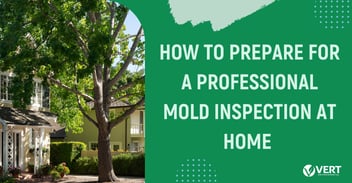Protecting Your Home from Mold After Mudslides
Mudslides are natural disasters that can leave a trail of devastation in their wake. In addition to the immediate damage they cause, mudslides can also lead to another insidious threat: mold growth in your home. In this blog post, we'll explore the potential for mold growth in mudslide-affected homes, and more importantly, we'll provide you with valuable insights on how to protect your home from mold's unwelcome presence.
Understanding Mold Growth in Mudslide-Affected Homes
The Ideal Conditions for Mold
Mold is a tenacious organism that thrives in moisture-rich environments. After a mudslide, homes are often inundated with water, creating the perfect breeding ground for mold. Additionally, the debris and organic matter carried by mudslides provide ample nutrients for mold to flourish.
Common Types of Mold
While there are thousands of mold species, not all of them pose a health risk. However, in the aftermath of a mudslide, it's crucial to be aware of potentially harmful molds such as Stachybotrys chartarum (black mold) and Aspergillus. These molds can release mycotoxins that can be harmful to human health.
Preventing Mold Growth: Immediate Steps
Safety First
Before we dive into mold prevention strategies, it's essential to prioritize safety during the post-mudslide cleanup. Wear appropriate protective gear, including gloves, masks, and goggles, to minimize your exposure to potential hazards like mold spores and contaminants.
Quick Removal of Mud and Debris
One of the first steps in preventing mold growth is to remove mud and debris from your home as quickly as possible. Here are some essential tips for efficient cleanup:
- Safety Precautions: Always put safety first. Turn off utilities like gas and electricity to prevent accidents.
- Proper Disposal: Dispose of mud and debris in accordance with local regulations.
- Pressure Washing: Consider using a pressure washer for exterior surfaces to remove mud and contaminants effectively.
- Drying Out: Ventilate and dry out your home to prevent moisture buildup. Open windows and doors to promote airflow.
Mold Prevention Strategies
Drying Out Your Home
Drying out your home is crucial to preventing mold growth. Mold thrives in damp environments, so the sooner you can reduce moisture levels, the better. Here's what you can do:
- Dehumidifiers: Use dehumidifiers to extract excess moisture from the air.
- Fans: Place fans strategically to promote airflow and aid in the drying process.
Inspecting and Repairing Damage
After a mudslide, it's essential to inspect your home thoroughly for damage. Look for structural issues, roof leaks, and damaged windows or doors. Addressing these problems promptly can help prevent moisture intrusion and subsequent mold growth.
Professional Mold Assessment
Perhaps the most critical step in preventing mold growth is enlisting the help of professionals. Vert Environmental specializes in mold assessment and testing. Their experts can:
- Conduct a comprehensive mold inspection.
- Identify potential problem areas.
- Perform mold testing to determine the extent of contamination.
With their expertise, you can make informed decisions about mold remediation and ensure your home remains a safe and healthy environment.
In the wake of a mudslide, it's natural to focus on immediate safety and recovery efforts. However, don't underestimate the long-term threat of mold. By taking proactive steps to prevent mold growth, you can safeguard your home and your family's health.
For peace of mind and professional mold testing services, visit Vert Environmental's website. Protect your home from mold's hidden dangers and ensure a mold-free future. As you rebuild and recover in mudslide-prone areas, remember that prevention is key to a safe and healthy home.

